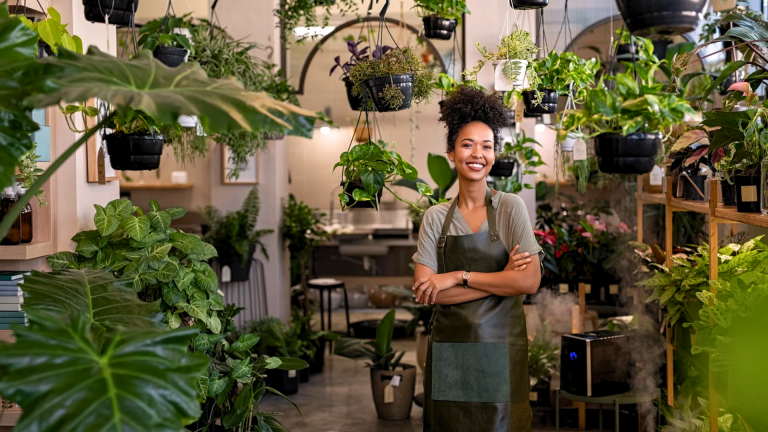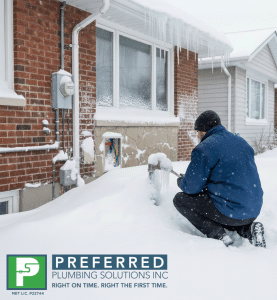Growing plants at home can turn into more than just a hobby—it can become a real source of income. The simple joy of watching seeds sprout and plants thrive can now help you earn money without leaving your house. Even a small apartment balcony or sunny windowsill offers enough space to begin.
In this guide, I’ll share exactly what you need to start your own home plant business. From picking the right plants to selling your first products, you’ll find clear steps to follow.
Many people want to start a plant business but don’t know how. I’ll solve this problem with proven methods that work for beginners.
As someone who’s helped dozens of small plant sellers get started, I can show you how to avoid common mistakes and set up a business that truly grows.
Why Start a Plant Business from Home?
Plants are more popular than ever. People want to fill their homes with greenery. I’ve seen the demand for houseplants, herbs, and garden plants grow steadily over the past few years.
You don’t need much money to start. Unlike many other businesses, a plant venture can begin with just a few pots, seeds, and soil. This makes it perfect if you have a tight budget.
Working with plants is good for you, too. I find that tending to plants lowers my stress levels. The daily task of caring for growing things brings a sense of calm that’s hard to find elsewhere.
The best part? You can grow at your own speed. Start small with a few plant types on your windowsill. Then expand when you’re ready. You can work full-time or just on weekends—it’s up to you.
Your plant business can fit around your life, not the other way around.
Decide What Type of Plant Business to Start
Start by picking what plant items you want to sell. You can offer houseplants that brighten indoor spaces. Succulents work well because they’re tough and easy to ship. Herbs appeal to home cooks. Plant starter kits are perfect for beginners who need everything in one package.
Think about what form your plants will take. I find that seeds cost less to store and ship. Seedlings grow faster for customers but need more care from you. Cuttings let you multiply plants you already own. Full-grown plants sell for more money but take up more space.
Don’t just stop at plants. You could add services, too. Offer to repot plants for local customers. Sell care kits with tools and soil. Help people style their plant corners at home.
How do you choose? Look at what you enjoy growing first. What thrives in your space? Check what people near you want to buy. If everyone in your area loves rare plants, that might be your focus. If you have limited room, small plants or seeds make more sense.
The best plant businesses match your skills with what customers actually need.
What You Need to Get Started
You don’t need fancy equipment to begin. Start with basic tools like pots in different sizes, good-quality soil, plastic trays to catch water, plant labels, and a reliable water can. I began with just these items and slowly built up my supplies.
For beginners, pick plants that forgive mistakes. Snake plants, pothos, and spider plants grow well even with less care. Herbs like basil and mint also make good starter plants. When you’re new, focus on plants that won’t die if you miss a day of watering.
Want to level up your setup? Consider these helpful extras:
- Heat mats to help seeds sprout faster
- Grow lights for plants in rooms with less sunlight
- Shelving units to make the most of your space
- Spray bottles for gentle watering
Match your tools to your space. If you have a small apartment, stick to compact supplies. I find that starting small lets you learn what works best before spending too much money.
Set up Your Growing Space at Home
Finding the right spot for your plants makes all the difference. Look for places in your home that get good light for most of the day. South-facing windows work best in most homes. I’ve found that east-facing spots give gentle morning light that many plants love.
Watch how sunlight moves through your rooms. Some plants need bright light, while others burn in direct sun. You’ll want to match each plant to the right spot.
Good air movement helps plants stay healthy. Keep them away from heating vents that dry them out. But don’t place them in drafty areas either.
Think about humidity, too. Most houseplants like more moisture in the air than our homes naturally have. You can group plants together to create a mini humid zone, or use trays with pebbles and water.
Working with limited space? Try these options:
- Wall shelves that don’t take up floor space
- Hanging planters that use vertical space
- Window boxes for herbs and small plants
- Tiered plant stands that hold multiple pots
I started my business with just a spare bedroom corner. Your plant space can grow as your business does.
Packaging and Shipping Plants Safely
Sending plants to customers takes special care. You’ll need boxes in various sizes, strong packing tape, clear shipping labels, and materials to keep plants warm. I use newspaper, bubble wrap, or shredded paper to fill empty spaces in boxes.
When packing a plant, wrap the pot in plastic to hold soil in place. For taller plants, use paper tubes around stems to stop them from snapping. Always pack plants snugly so they can’t move around during shipping.
How do you keep plants from drying out?
Slightly damp (not soaking) moss around roots helps plants stay fresh. For succulents and cacti, make sure they’re completely dry before packing to prevent rot.
Your shipping options depend on distance:
- Hand delivery works well for local customers
- Regular mail for small, hardy plants
- Express shipping for delicate or rare varieties
I check the weather forecast before shipping. Extreme heat or cold can harm plants in transit. When temps drop below 40°F or rise above 90°F, I hold orders or use heat packs and insulation.
Remember to check shipping rules. Some states don’t allow certain plants to cross their borders due to pest concerns.
Where and How to Sell Your Plants?
Selling Plants Online
Online shops open your business to more buyers. Etsy works well for plant sellers because people go there looking for unique items. I’ve found that clear photos showing the actual plants you’re selling make a big difference.
Facebook Marketplace helps you reach local buyers without shipping costs. Instagram lets you show off your plants with pretty pictures and connect with plant fans.
Actually, when it comes to at-home related businesses, a lot of business owners often overlook their internet connection (it’s so basic yet so overlooked). So, just checking for reliable internet providers near me (or you!) makes sure your online shop runs smoothly without frustrating slowdowns. After all, nothing kills a sale faster than glitchy uploads or missed messages because your connection dropped.
Local In-Person Sales
Farmers’ markets give you face-to-face time with customers. You can answer questions and build trust right away. Local craft fairs bring in people who might not search for plants online but fall in love when they see yours.
Have you considered front porch pickups? This method lets nearby customers order online and pick up from your home, saving on shipping.
Building Customer Loyalty
The best customers come back again and again. Include simple care cards with each plant you sell. When people succeed with your plants, they’ll want more.
I send follow-up emails a week after delivery to check how the plants are doing. This extra step shows you care about your plants even after they leave your home.
Tips for Making Your Plant Business Profitable
Starting and running a plant business can be rewarding, but turning it into a money-making venture requires careful planning and smart strategies. These are useful tips to boost your plant business profits:
1. Growth at Your Own Pace
Begin with what you can handle well. I started with just 20 plants in my spare room before trying to sell more. When those sold quickly, I added another batch. This slow growth lets you learn as you go without wasting money. You can test what sells best before buying lots of supplies or plants that might not sell.
2. Smart Pricing Strategy
Set prices that cover all your costs and pay you fairly for your time. Add up what you spend on soil, pots, seeds, water, and electricity. Then count the hours you spend caring for plants. I use a simple rule: my retail price should be at least double what I spent making the product. This gives room for sales while still making money.
3. Create Value Bundles
Why sell just one thing when you can offer more value?
Put together plant packages that solve problems for buyers. A complete “plant parent starter kit” with plant, pot, soil, and care tips can sell for more than each item alone. These bundles save customers time and feel like a better deal, even at higher prices.
4. Seasonal Sales Approach
Change what you offer as the seasons change. Holiday-themed plants sell well in winter. Offer garden starters in spring. Summer brings an interest in outdoor plants. I’ve found that plant subscription boxes work year-round, giving you steady income even in slower months.
5. Inventory Management
Healthy plants are profitable plants. Check your stock often and address problems quickly. Move slow-selling plants to more visible spots or offer them at lower prices before they decline. Good plant care means less waste and more profit. I keep records of which plants sell fastest, so I know what to grow more of next time.
Common Mistakes to Avoid when Starting Out
1. Too Many Plant Varieties
Focus beats variety when you’re starting out. I’ve seen new sellers try to grow dozens of plant types right away, only to struggle with different care needs. Pick 5-10 plants you know well and perfect growing those first.
You’ll waste less money on plants that die and build expertise you can share with customers. After you master these few types, slowly add new ones to your lineup.
2. Space and Light Limitations
Many beginners think they have more growing space than they actually do. Plants need room to spread out as they grow. That windowsill might fit 3 mature plants, not 10.
I learned this lesson when my first batch of seedlings quickly outgrew my shelves. Study the full-grown size of each plant before starting. And be honest about your light conditions! Not every home has the bright, indirect light that many popular houseplants need.
3. Legal Oversight
Skipping research on permits and rules can cause big headaches later. Some towns require business licenses even for small home operations. Certain plants can’t be shipped across state lines due to pest concerns.
I once had a plant order returned because I didn’t know about California’s strict import rules. Check both local and state regulations before you sell your first plant.
4. Financial Tracking Gaps
Start keeping records on day one. Write down every dollar you spend and make. Without good records, you won’t know if you’re actually making money.
Use a simple spreadsheet to track costs for soil, pots, seeds, and your time. This helps you set fair prices and shows which plants bring the most profit. I wish I’d done this sooner in my business.
5. Customer Communication
Quick and helpful answers to customer questions build trust. When people ask how to care for their new plant, they need timely help. Ignoring these questions leads to unhappy customers and dead plants.
Both hurt your reputation. I make time every day to respond to messages, even just to say, “I’ll get back to you with more details tomorrow.”
Conclusion
Starting your home plant business doesn’t need to be hard. Begin with just a few plants and let your knowledge grow alongside them. I’ve seen many successful plant sellers who started with nothing more than a sunny window and a few pots.
Your love for plants shows in how you grow and care for them. This passion will attract customers who share your interest in green living things. Be patient with yourself. Every plant parent makes mistakes. Learn from them and move forward.
With good planning and careful attention to details, your small plant business can become a steady source of income. The most important step is simply to start.
Take that first step today. Plant those seeds, prepare those cuttings, or set up that growing shelf. The plant community welcomes new growers, and customers are eager to bring more greenery into their homes.
Your plant business can grow—one leaf at a time.
















